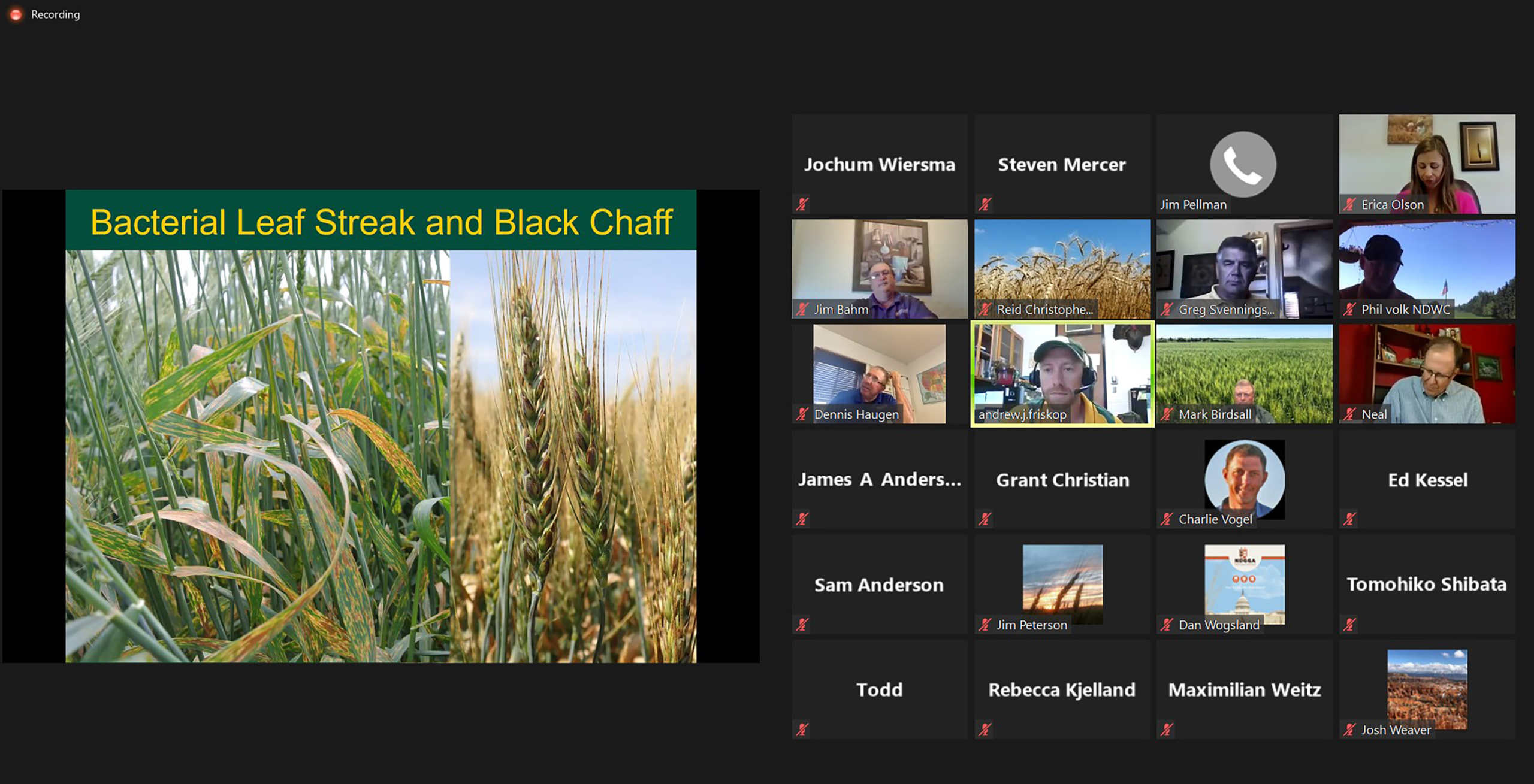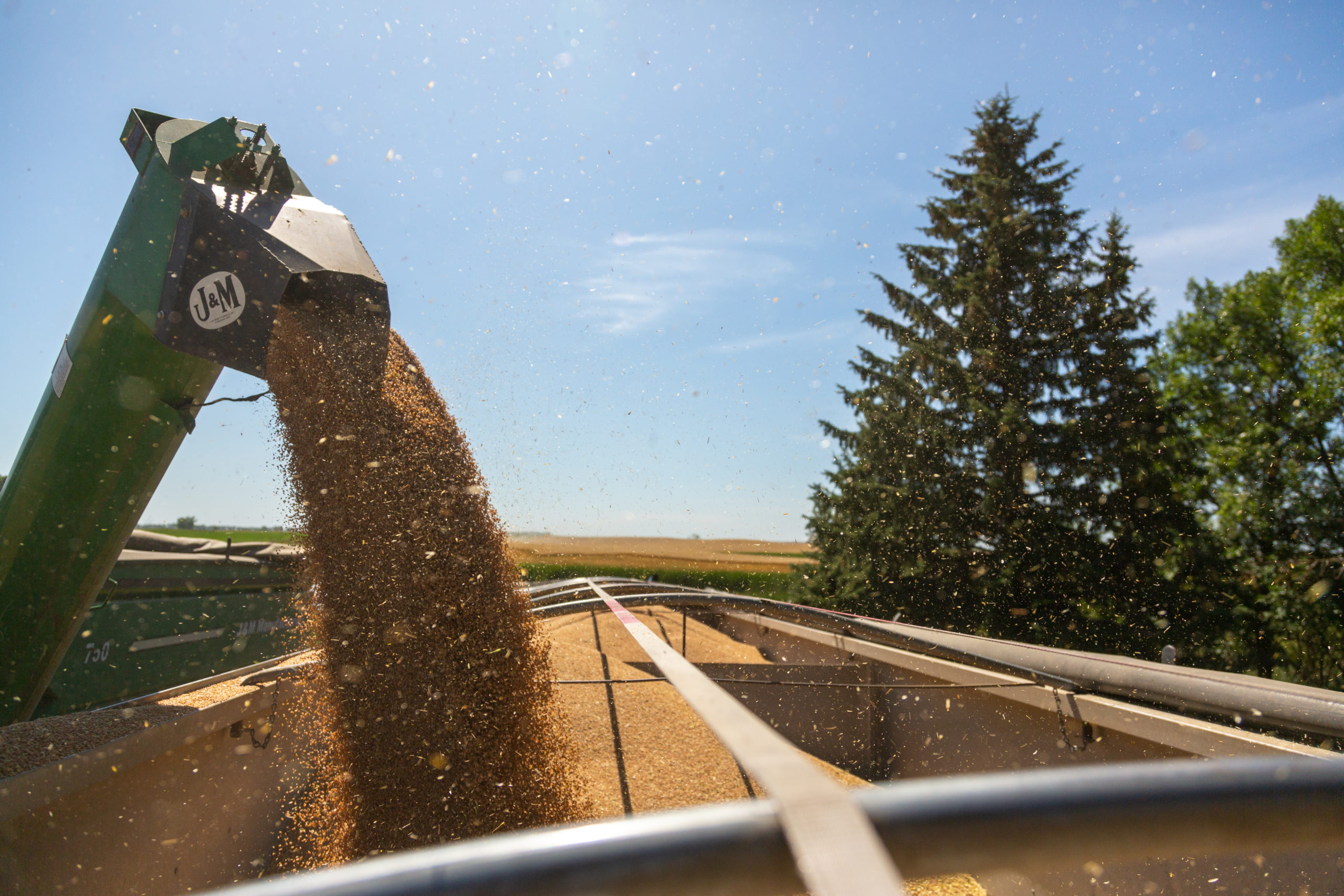Virtual U.S. Spring Wheat Update Signals a Variable, But Likely Average 2020 Crop
The North Dakota Wheat Commission (NDWC) and the North Dakota Grain Growers Association (NDGGA) brought the 2020 U.S. hard red spring (HRS/DNS) wheat crop to domestic and international stakeholders on July 28 via a “Virtual Hard Red Spring Wheat Pre-Harvest Update” on the Zoom platform.
Presentations from NDWC, farmers and university experts painted a picture of a variable crop across Montana, North and South Dakota and Minnesota that is about three weeks away from the height of harvest. Crop conditions run the gamut from excellent yield and quality potential to thin drought and heat stressed pockets and even water-logged fields in eastern production areas. The experts who reported on the crop generally agree that USDA’s current HRS yield forecast of 46.6 bushels per acre (bu/a) is “optimistic,” but should end up close to the long-term average yield of 45 bu/a.
Dr. Joel Ransom, North Dakota State University (NDSU) Extension Agronomist, told an estimated 211 participants on the virtual update that farmers will see many good fields this year, but few will have “their best crop ever.” NDSU’s spring wheat breeder Dr. Andrew Green explained that farmers in the state are paying close attention to end-use qualities as well as yield potential when selecting varieties – and in their management.
“Functional quality and yields in North Dakota’s spring wheat production have both increased overall the past several years,” Dr. Green said. “We are seeing that higher yields and better quality are not mutually exclusive.”

In the Virtual HRS Pre-Harvest Update, Dr. Andrew Friskop, Extension Plant Pathologist, NDSU, described symptoms of a wheat disease called bacterial leaf streak to help farmer participants identify the disease. NDWC Market Development and Research Manager Erica Olson did a great job managing the challenges inherent in today’s virtual meetings.
Dennis Haugen farms in east central North Dakota and showed the participants a field with an estimated yield potential of around 75 bu/a.
“The problem in this area is that it has been so wet since last year, many fields were never planted,” he said, describing conditions that also prevail along the Red River in North Dakota and across the river into Minnesota.
“Northwest Minnesota has received up to three times our normal annual rainfall since 2019, so it was very challenging to get spring wheat seeded,” said Dr. Jochum Wiersma, Extension Small Grains Specialist at the University of Minnesota’s Crookston station. “In the fields that were planted, we are going to see yield loss and lower protein levels – if they can be harvested. We are asking for dry weather until November in our area.”
Planting conditions were better in South Dakota and farmers were able to seed 815,000 acres of spring wheat, which is 35 percent more than in 2019, said Reid Christopherson, Executive Director of the South Dakota Wheat Commission. The HRS harvest there is already about 10 percent complete.
Relatively cool conditions with good moisture has the Montana HRS crop in very good shape overall with the potential for high yields and good quality protein. Sam Anderson, Industry Analyst & Outreach Coordinator for the Montana Wheat & Barley Committee, reported that among spring wheat states, Montana has the highest rated crop conditions at 80 percent good to excellent.
NDWC Administrator Neal Fisher, NDGGA Executive Director Dan Wogsland and Wheat Quality Council Executive Vice President Dave Green each expressed thanks to all the participants and the folks who planned and managed the virtual pre-harvest update, and offered sincere hope that participants in the 2021 Wheat Quality Council’s spring wheat tour will be back in their vehicles checking fields along the traditional routes.


